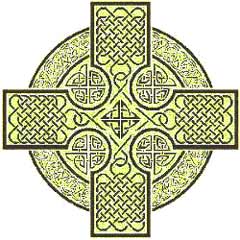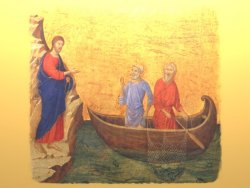 Apostolic
Apostolic 
St. Gildas the Wise of Wales wrote in his De Exidio Brittanniae that Christianity came to Briton in the last year of the reign of Emperor Tiberius Caesar, which would be in the year 37 A.D. The Eastern Orthodox Church credits Aristobulus, the brother of Barnabas who was mentioned in Romans 16:10, with introducing the faith there. Eusebius and Hippolytus both name Aristobulus as being one of the Seventy (or Seventy Two) mentioned in Luke 10 as does Strong's Concordance. Hippolytus in AD 160 writing in the Martyrologies of the Greek Church stated that Aristobulus preached the gospel in Briton. The Eastern Orthodox Church regards him as the first bishop of Briton and honors him as the Saint of the British Isles. His feast day is on March 16 in some churches and on October 31st in others. St. Dorotheus of Tyre wrote in 303 A.D. that Aristobulus preached in Briton and that the apostle Simon Zelotes was martyred there and buried in Caistor in Lincolnshire.
Sir Henry Spelman in his Concilia along with strong oral tradition, places Joseph of Arimathea in Briton as well. He was a merchant who traded tin, acquired in present day Cornwall, to the Romans for use in making bronze for swords. After Pentecost and fleeing persecution Joseph left Jerusalem with a team of missionaries led by St. Phillip. The team reached Gaul in Western Europe in what is now France. Phillip and others in the group stayed in the vicinity of Marseilles where they founded a church. The other group crossed the channel and landed on the Somerset coast. In nearby Glastonbury they established a Christian mission.
The Roman Catholic Church also has evidence in the archives of its great library at the Vatican which supports the existence of the early Celtic Church. Cardinal Baronius, (1538 – 1607) who became Curator of the Vatican Library in 1597, wrote the following in his Ecclesiatical Annals. “In that year, [i.e. A.D. 36] the party of Joseph of Arimathea and those who went with him into exile, was put out to sea in a vessel without sails of oars. This vessel drifted, and finally reached Massilia [i.e. Marseilles] where they were saved. From Massilia Joseph and his company passed into Briton and after preaching the Gospel there, died.”
Many other ancient historians and Church Fathers wrote of the existence of the Celtic Church. Tertullian (A.D. 155 – 222) of the Church in North Africa wrote as follows: “the extremities of Spain, the various parts of Gaul, the regions of Briton which have never been penetrated by Roman arms, have received the religion of Christ.”
Origen of Alexandria, wrote in A.D. 230, “The divine goodness of our Lord and Saviour is equally diffused among the Britons, the Africans, and other nations of the world.”
 St. Jerome, writing from Bethlehem in A.D. 378, said, “From India to Briton, all nations resound with the death and resurrection of Christ.”
St. Jerome, writing from Bethlehem in A.D. 378, said, “From India to Briton, all nations resound with the death and resurrection of Christ.”
Chrysostom, Patriarch of Constantinople, wrote in A.D. 402, “The British Isles, which are beyond the sea, and which lie in the ocean, have received the virtue of the word. Churches are there founded and altars erected. Though you should go to the ocean, to the British Isles, there you will hear all men everywhere discoursing matters out of the Scriptures, with a different voice indeed, but not another faith, with a different tongue but the same judgment.”
Eusebius, the Church Historian (A.D. 260 – 340) wrote, “The Apostles passed beyond the ocean to the Isles called the Britannic Isles.”
And Arnobius, the Christian apologist, writing about 300 A.D. declared, "so swiftly runs the word of God that though in several thousand years God was not known except among the Jews, now within the space of a few years, His word is concealed neither from the Indians in the East nor from the Britons in the West."
Archaeological evidence supports the existence of the Christian church in Briton during the first century with one of the earliest known church structures identified from approximately 140 A.D. This proves the Celtic Church is much older than the Roman Catholic Church, which was began in 326 A.D. by the Emperor Constantine.
Emperor Constantine, who legalized Christianity in the Roman Empire, had grown up in York. His mother, Helen, was a native Briton and a Christian. She was an influence in his conversion to Christianity. According to an account given in Lives of Saints, Published by John J. Crawley & Co, which is based on the writings of Eusebius, when Constantine was defending his empire from an attack by Maxentius with vastly superior forces, he suddenly remembered the crucified Christ his mother worshipped. It was then he knelt down and for the first time in his life prayed to God and received his now famous vision.
Historians record that the Celtic Church played an important role in the early ecumenical councils. The first great council was held In 300 A.D. at the Council of Elvira in Spain. This was a council of all the existing Gallican Churches. The Celtic Church on the European continent was known as the Gallican Church and covered what is present day Spain, France, Switzerland and northern Italy. In Briton the Church was known simply as the Celtic Church. Again, In 314 A.D. three bishops from the Celtic Church in Briton attended the Council of Arles. And at the Council of Nicea in 325 A.D. the Celtic Church was again well represented, whereas the Roman church did not have a single bishop in attendance. In 359 A.D. when over 400 bishops met at the Council of Rimini to deal with the issue of Arianism bishops from the Celtic Church were present. In 600 A.D. when Augustine came to Briton to establish a mission from Rome he was greeted by Christians from St. Martin’s Celtic Church (named for St. Martin of Tours), in Canterbury. It was said that he worshipped there until his church could be built.
The Celtic Church was known to the Reformers and much of the liturgy in the Anglican Church was modeled after the Celtic Liturgy. The Orthodox Church recognizes the validity of Anglican Orders in part because several post reformation Anglican bishops were assisted in their ordination by Celtic bishops (CHRISTOPHER HAMPTON, Archbishop of Armagh assisted the Archbishop of Canterbury in at least three Episcopal ordinations in the 17th century). Up to the 12th century it was very common for Roman Catholic bishops to be assisted in their ordination by Celtic bishops.
The Celtic Church was not destroyed or driven away, contrary to much that has been written to that effect. It has survived the ages and is alive and well today.
If you would like to know more about this church and the ancient faith that has been preserved since the time of the apostles please click here
